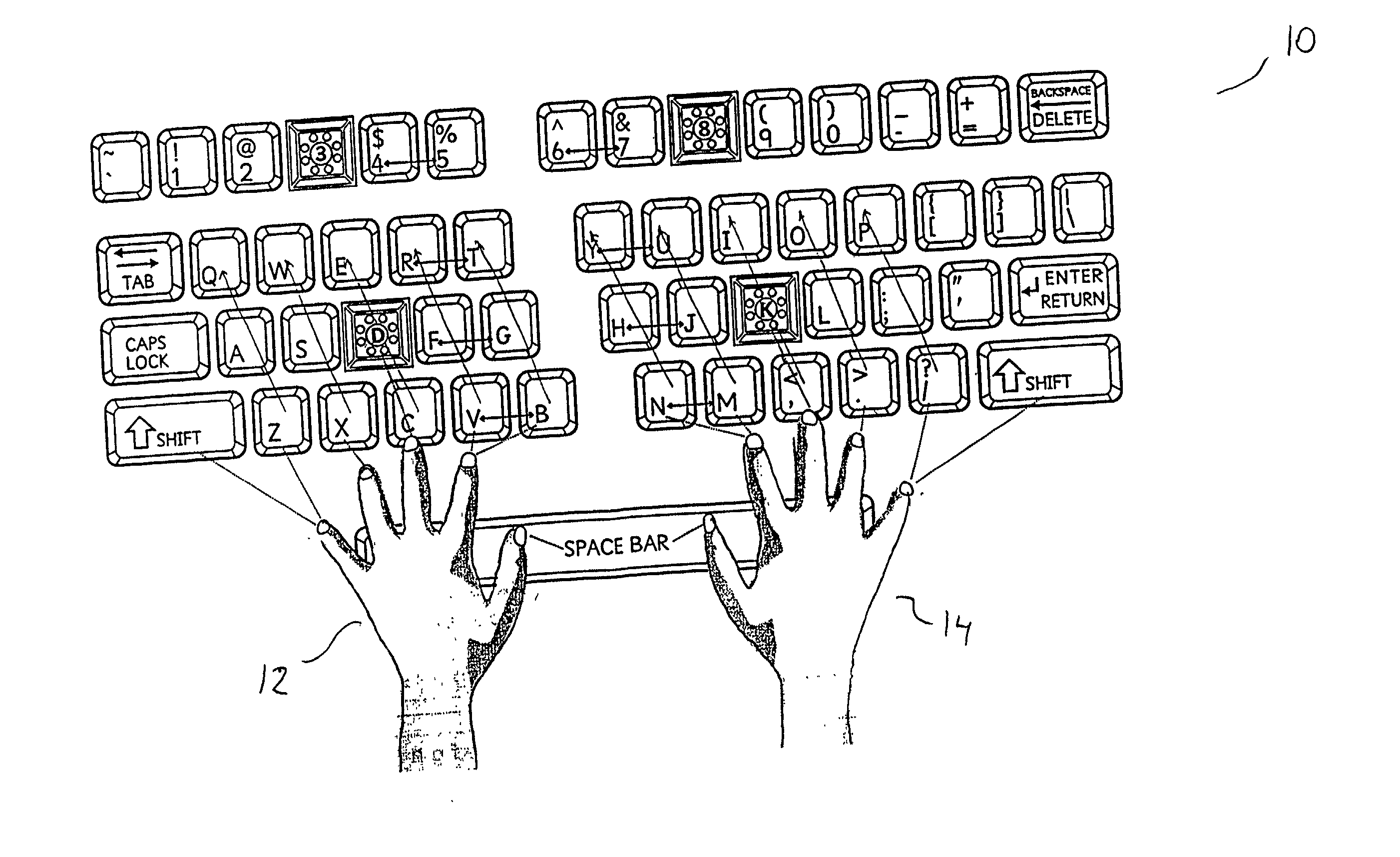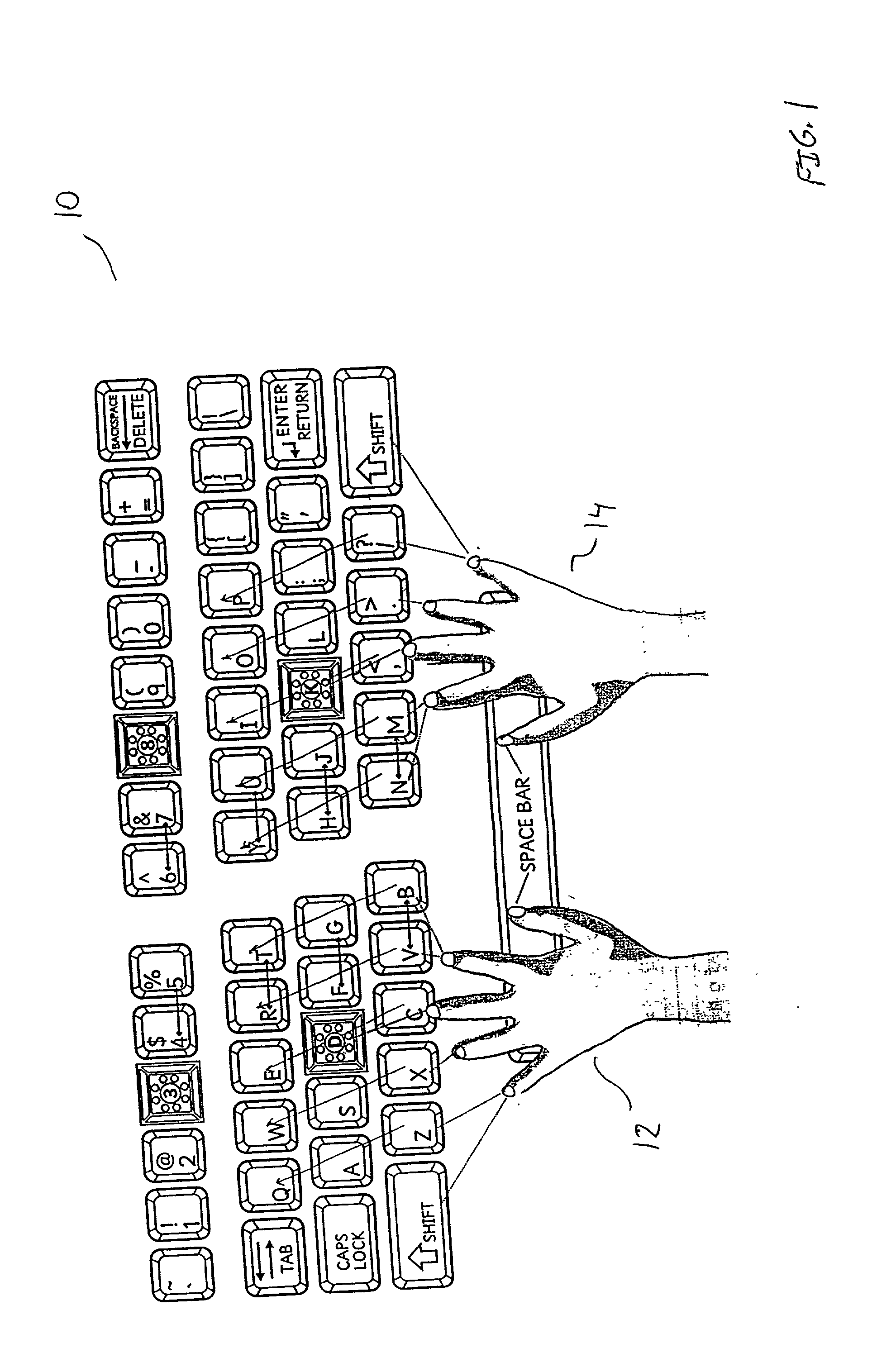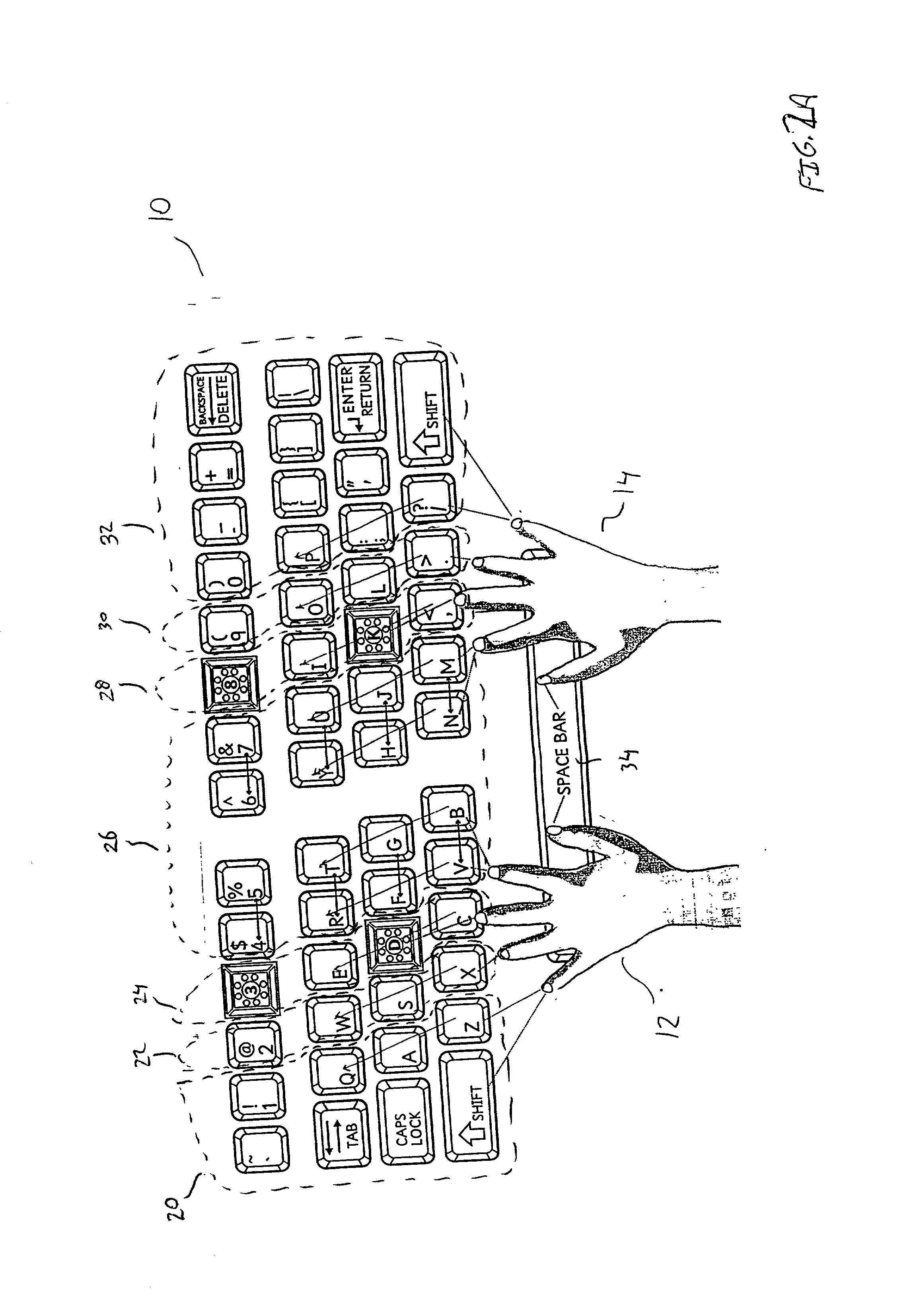Method and apparatus for teaching computer keyboarding
- Summary
- Abstract
- Description
- Claims
- Application Information
AI Technical Summary
Benefits of technology
Problems solved by technology
Method used
Image
Examples
Embodiment Construction
[0037] The present invention will be described as set forth in the preferred embodiment illustrated in FIGS. 1-7. Other embodiments may be utilized, and structural, logical, or programming changes may be made, without departing from the spirit or scope of the present invention.
[0038] The following terms will be used:
[0039] Centering: Centering describes correct posture, consistent body alignment relative to the computer workstation and use of raised sensors for locating middle finger centers (default positions). Centering helps users develop awareness both of the position of their body in space and the organization of the keyboard, through a consistent spatial relationship between their fingers and the keyboard. In the prior art, these concepts are taught at the beginning. Users receive no further instruction, reinforcement or feedback regarding alignment and fingering. This void is particularly harmful to users who have visual-spatial cognition difficulties. Ongoing support from a ...
PUM
 Login to View More
Login to View More Abstract
Description
Claims
Application Information
 Login to View More
Login to View More - R&D
- Intellectual Property
- Life Sciences
- Materials
- Tech Scout
- Unparalleled Data Quality
- Higher Quality Content
- 60% Fewer Hallucinations
Browse by: Latest US Patents, China's latest patents, Technical Efficacy Thesaurus, Application Domain, Technology Topic, Popular Technical Reports.
© 2025 PatSnap. All rights reserved.Legal|Privacy policy|Modern Slavery Act Transparency Statement|Sitemap|About US| Contact US: help@patsnap.com



